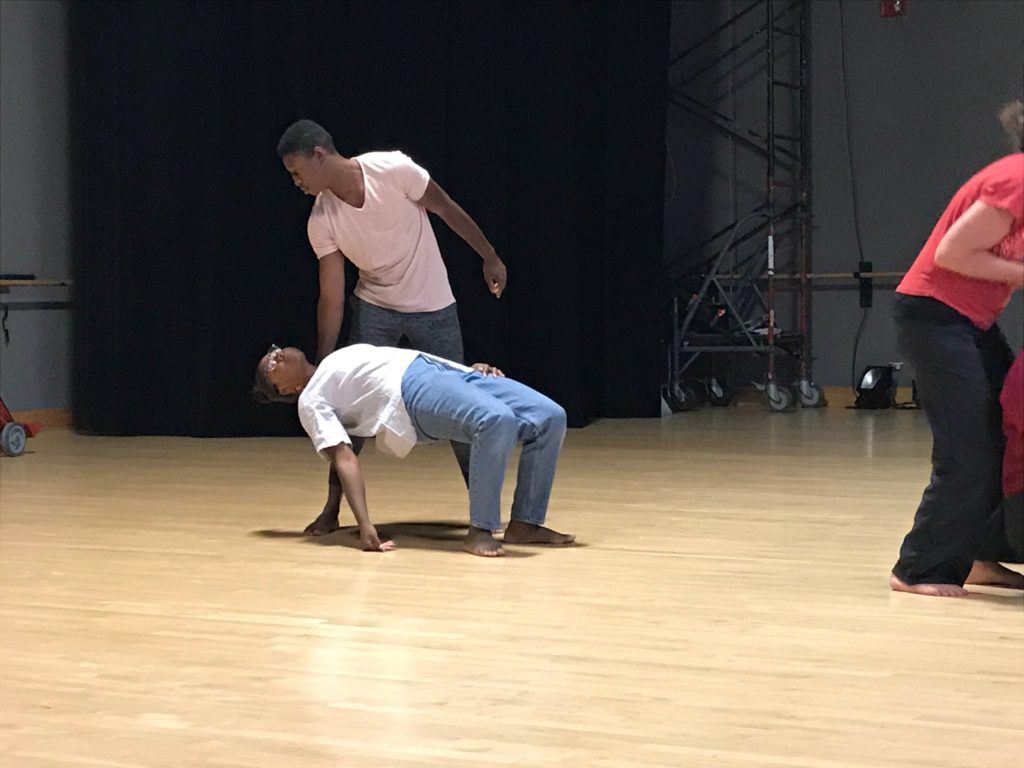
In a storage unit in Boulder sits a sort of museum of remembrance, momentos of lives past, curated intentionally by CU Theatre and Dance Department staff member Ondine Geary. Each cardboard box is a glimpse into a life that no longer walks among us. On a radio, voices of family and friends talk about what these items meant to the deceased: A husband’s handkerchief, a box of handwritten recipes, a bowling trophy, a toolbox, a negative pregnancy test.
This museum is the first in Geary’s three-part, multi-disciplinary project Radius of Transmission. It’s a site-specific, roving exploration of grief born from Geary’s journey through loss.
In 2017, Geary’s older brother suddenly died. He was 40.
Geary traveled to Memphis, her hometown, to help clean out her brother’s apartment.
“I found it so hard and so cathartic to be in his space,” she says. “To be there with all his objects… it was almost like those objects became a stand-in for him. He was this amazing painter. … I could just imagine his presence there in a way. Those [paintings] held his presence in a way that none of the other objects did. And it made me think a lot about what it means to create something. He stood there and created something that didn’t exist before and that creation was somehow kind of a record or an archive of his days on this planet, the things he had encountered and saw and processed through his senses.”
At the time, Geary wasn’t dancing regularly, though she’d studied it. But her brother’s death — organizing his paintings — brought Geary back to her own art.
“I had this renewed sense of the value of making art and that if we have the capacity to be creative, that we sort of owe it the world to share that.”
So she began to develop Radius of Transmission as a way to process her emotions. Then, just a year after her brother’s death, her father died.
Geary was swept back by another high tide of grief. She found herself constantly thinking about the way that we all endure grief, and yet it’s such a lonely experience. Sometimes as we weather our own loss, we end up comforting other people as they try to console us. We’re asked, politely, to move on with our own lives, the way our loved ones would have wanted, and so we do, but the loss is like white noise in the background, refusing to let us move on in peace. Some of us have a clear understanding of where our loved ones now reside. Others are less sure.
With these thoughts in mind, Geary separated Radius into three parts, the first focusing on the objects of the deceased, the second examining the empty space where the dead once lived, and the third centered on the living as they move forward in the wake of loss.

While objects helped Geary hold on to pieces of her brother and father’s personalities, she struggled with their physical absence. She wondered: Where did they go?
“I don’t have any certainty that there is an afterlife, that there are signs that there’s any communication happening at all. But I read something that Nick Cave wrote and he says that meaning is the antidote to despair,” Geary says. “I think for me, mystery is the antidote to despair.”
She began fantasizing about sending radio transmissions to her father and brother, communicating with them wherever they were. Sometimes she felt like she could sense — though not decipher — fleeting messages from them, like moving from static to a clear frequency and back on a radio dial.
In part two of Radius, participants will drive their cars to an open lot in Boulder and tune into a radio broadcast of spoken word poetry. The caravan will then move through Boulder for about four miles. The experience is meant to mimic the way that grief follows us, the poetry on the radio creating a sense of the intangible connection that the living continue to have with the dead.
Part two ends at the location for the final installment, a dance piece that represents the way the living must, well… live.
In the Charlotte Yorke Irey Theater at CU Boulder, Geary recently leads a group of seven dancers in rehearsal. Their movements echo the themes of previous installments: the isolation of grief; how space and time warp in the aftermath of loss; how we’re expected to move forward with the weight of loss pressing down on us; how the weight lessens with time.

The first part of the project launched on Aug. 19, while parts two and three begin Sept. 4. The entire project will run through Sept. 16. It’s another way in which Geary nods to the way grief stays with us over time. It is, in her words, a way to mimic the way grief “tilts reality.”
In creating what some might call “immersive theater,” Geary wanted first and foremost to be respectful.
“I didn’t want to create a context where I was asking people to feel grief,” she says. “I think in immersive theater, the audience can feel like a prop in the scene and I did not want to do a disservice to how deeply personal and deeply important grief is by doing any kind of emotional manipulation.”
Like grief itself, Radius of Transmission is an individual experience that plays out in a larger group. Hidden in plain sight.
ON THE BILL: Radius of
Transmission. Part I, Aug. 19–Sept.16, free of charge. Sign up for an appointment at radius.dance/attend-radius
Parts II & III, Wednesday through Saturday, September 4-7, 2019. Tickets are $55, radius.dance/attend-radius














